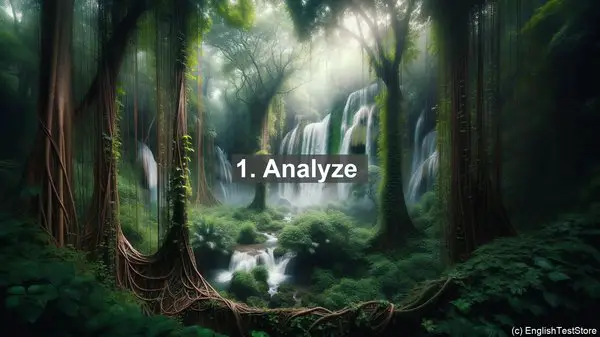Introduction
Welcome to today’s lesson. Big data analysis and interpretation have become crucial skills in various fields. Apart from the technical aspects, having a strong vocabulary is equally important. Today, we’ll explore the top 10 verbs that you should be familiar with when discussing big data analysis and interpretation.
1. Analyze
The first verb on our list is ‘analyze.’ It refers to the process of examining data in detail to uncover patterns, trends, or insights. When you ‘analyze’ data, you’re essentially breaking it down to understand its components and their relationships.
2. Interpret
Next up is ‘interpret.’ Once you’ve analyzed the data, you need to make sense of it. ‘Interpreting’ data involves understanding its meaning, drawing conclusions, and identifying implications. It’s about going beyond the numbers and understanding the story they tell.

3. Visualize
Data can often be complex and overwhelming. That’s where ‘visualize’ comes in. ‘Visualizing’ data means representing it in a graphical or visual format, such as charts, graphs, or maps. This not only makes the data easier to understand but also helps in spotting patterns or outliers.
4. Compare
When you have multiple datasets or variables, ‘compare’ becomes essential. ‘Comparing’ data involves examining the similarities and differences between them. It helps in identifying trends, variations, or relationships that might not be apparent at first glance.
5. Predict
One of the most exciting aspects of big data analysis is the ability to ‘predict’ future outcomes. By analyzing historical data and identifying patterns, you can make informed predictions about what might happen in the future. This is particularly valuable in fields like finance, marketing, or healthcare.

6. Correlate
Sometimes, two variables might be related, but it’s not a direct cause-and-effect relationship. That’s where ‘correlate’ comes in. ‘Correlating’ data involves identifying the statistical relationship between variables. It helps in understanding how changes in one variable might impact another.
7. Cluster
In large datasets, there might be groups or clusters of similar data points. ‘Clustering’ involves grouping these data points based on their similarities. It helps in identifying patterns or segments within the data, which can be useful for targeted analysis or decision-making.
8. Validate
When you’re working with data, it’s essential to ensure its accuracy and reliability. ‘Validating’ data involves checking its quality, consistency, and integrity. This can be done through various methods, such as cross-referencing, data cleaning, or statistical tests.
9. Summarize
In many situations, you might need to present a concise overview of the data. That’s where ‘summarize’ comes in. ‘Summarizing’ data involves capturing its key points, trends, or findings in a brief and structured manner. This is particularly useful when communicating with stakeholders or presenting insights.
10. Communicate
Last but not least, all the analysis and interpretation is meaningless if you can’t effectively ‘communicate’ it. ‘Communicating’ data involves presenting it in a clear, organized, and engaging manner. This can be through reports, presentations, or data visualizations.

